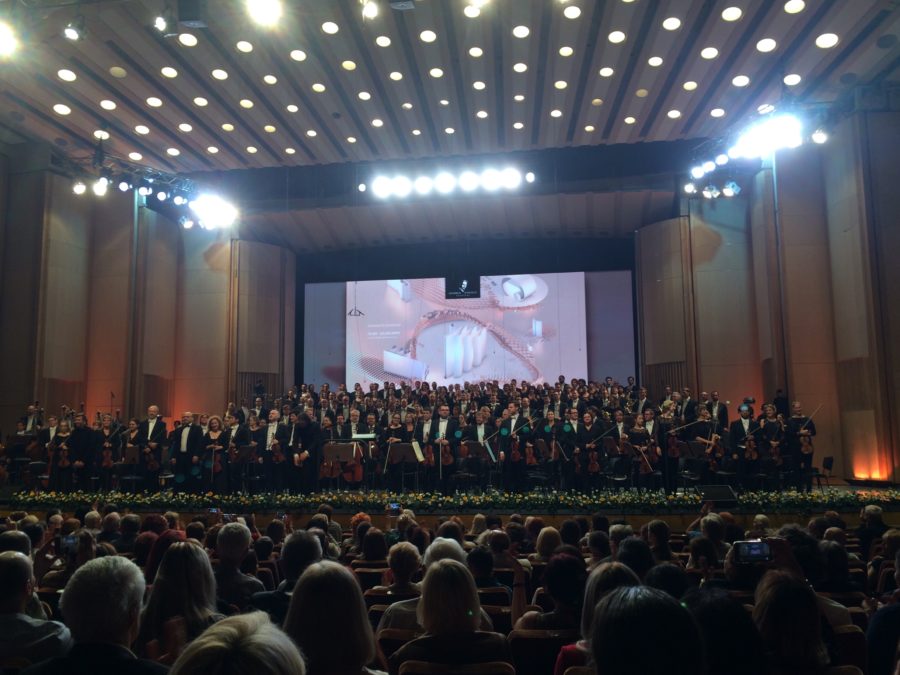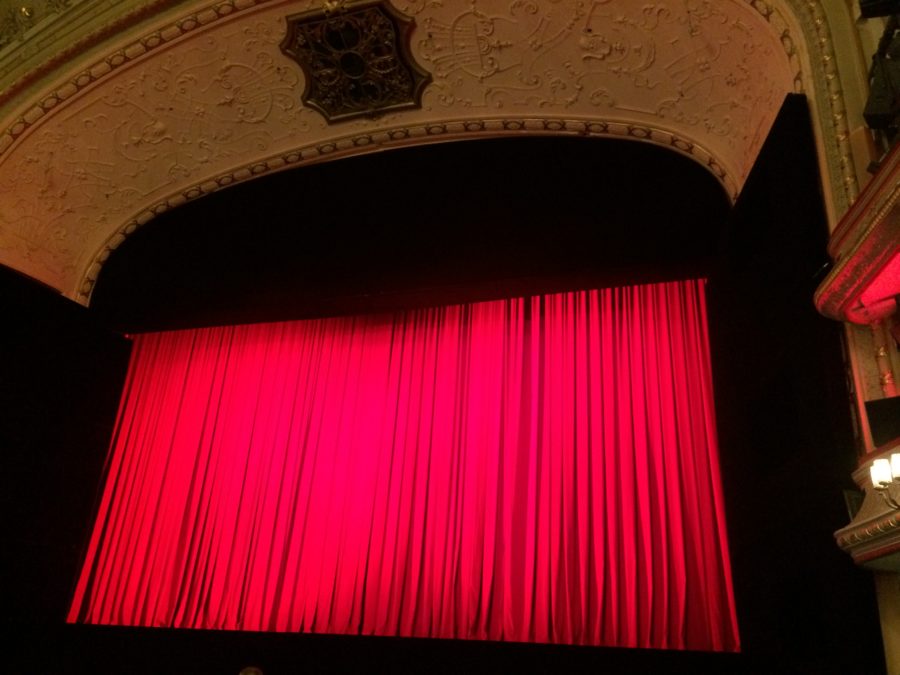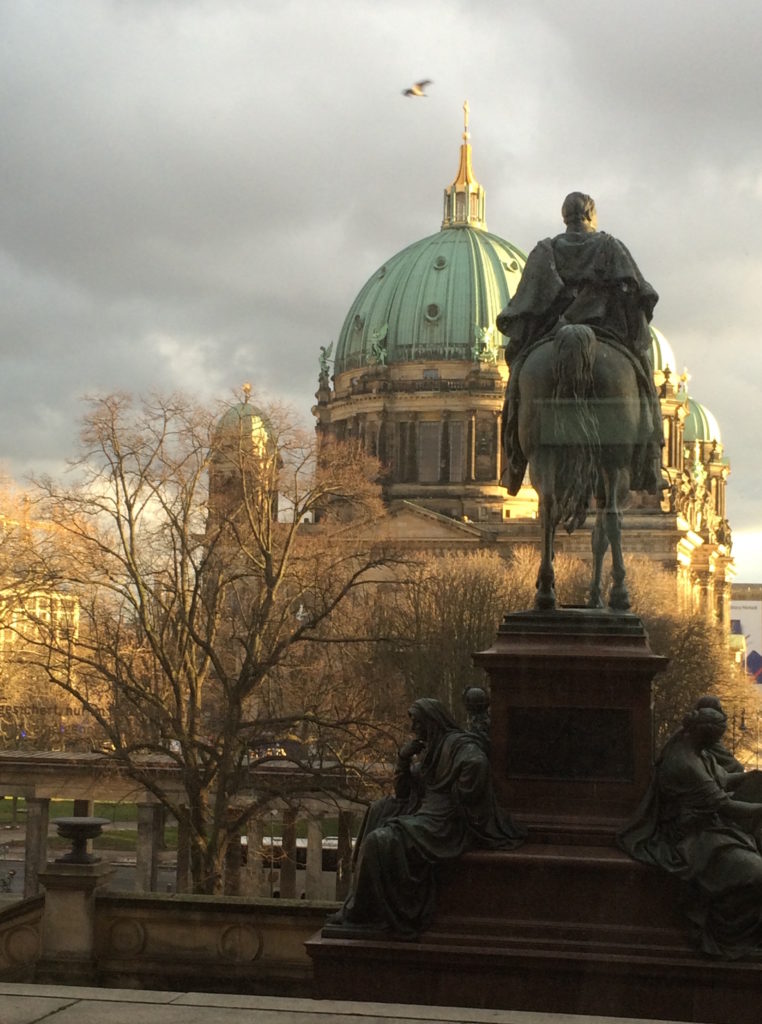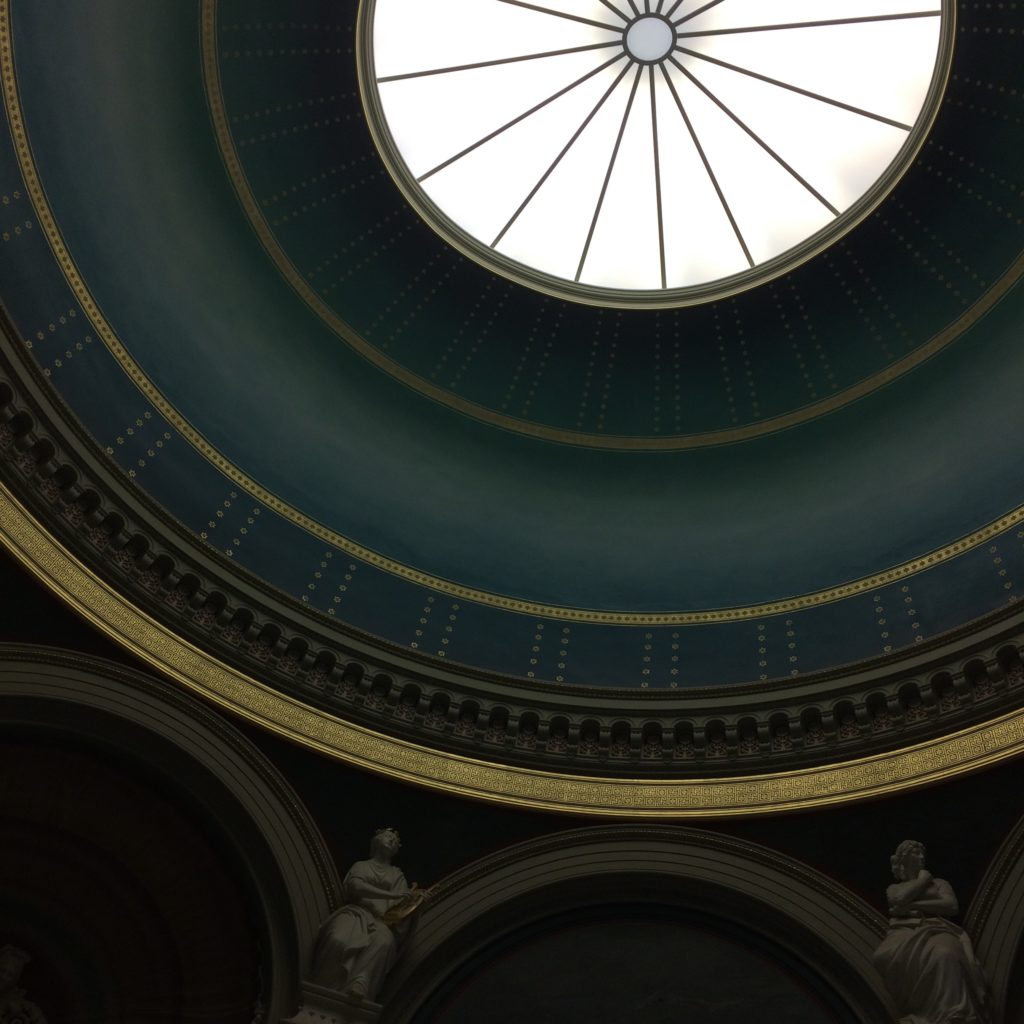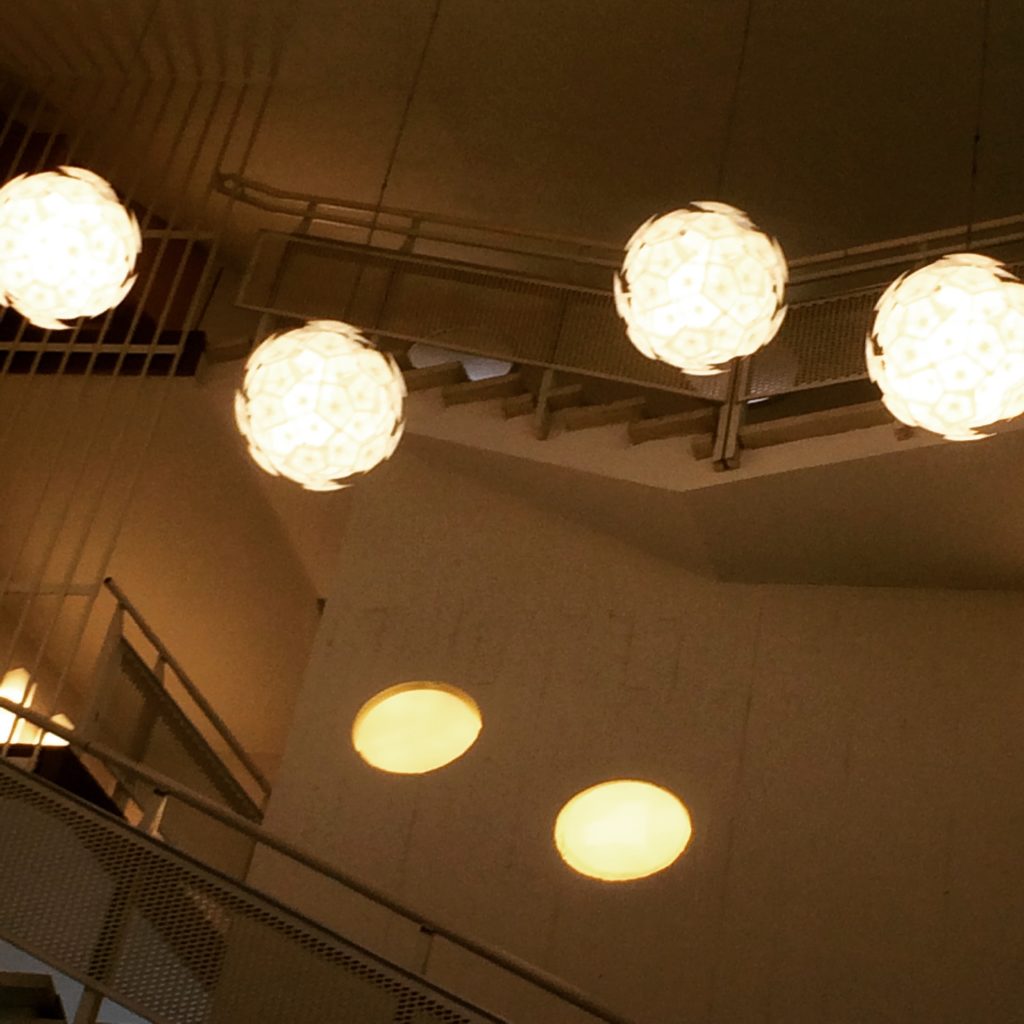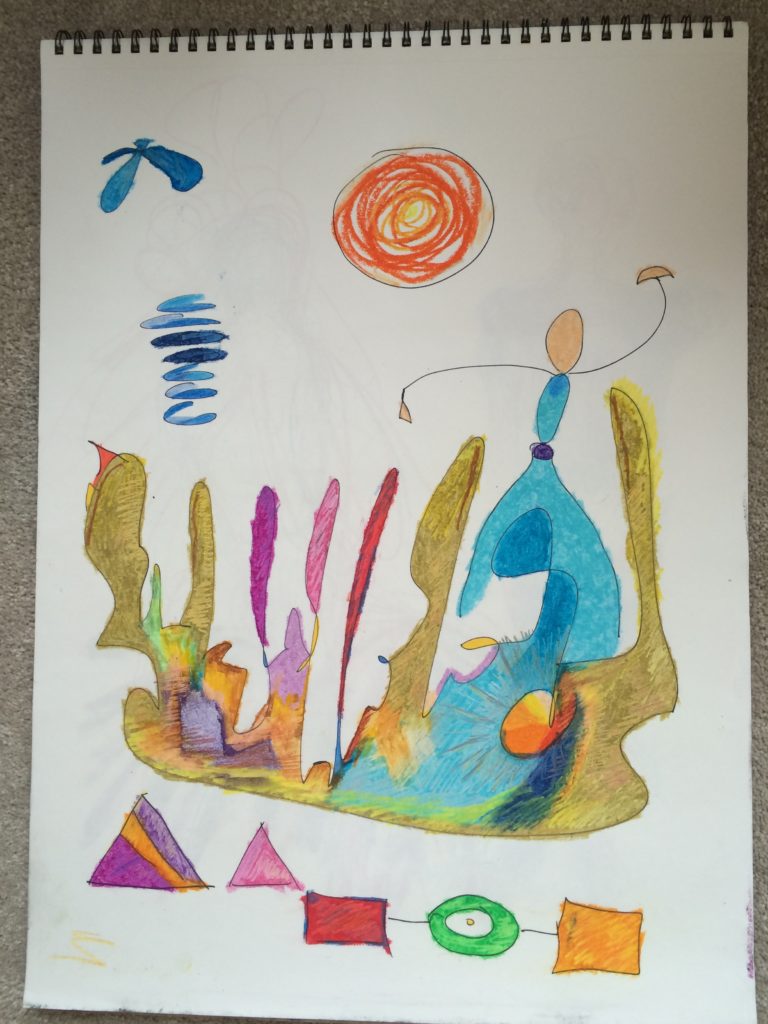Since the start of the coronavirus quarantine in March, I’ve returned drawing and painting more frequently, activities I adore but didn’t always devote the proper time or energy to in past, so-called normal times. I first explored these pursuits close to two decades ago as a natural extension of my engagements with photography, dance, theatre, and writing. At once technical, instinctual, emotional, and sensual, I think of drawing and painting as extension rather than escape, an experiment without a definitive end point. This attitude was encouraged by my instructor, a professional artist and professor at a major Canadian art school, who strongly discouraged the use of erasers in those preliminary sketching classes. “Be open to everything,” she would say in her soothing caramel tones, “don’t be so attached to one road or path, or to things being perfect.” It’s an easy credo that is hard to put into actual practise, whether in pencil or any other creative pursuit, and particularly so for those of us with those insistent perfectionist tendencies; to trust the unknown, to have faith in the journey, to loosen the desire for complete control of the final outcome, and its effects – these are big things to ask in any setting, doubly so in a new one. But what might be terrible errors outside the studio become, within it, opportunities for unexplored paths, where losing, finding, forming, shaping, and re-shaping, again and again, are part of the overall process, one that is becoming a central mode of expression.
That acceptance of the unfamiliar is being discussed in the classical world with particular urgency as the reality of no full presentations until 2021 seeps into the overall consciousness. Pappano told The Stage recently that “(w)hat’s going on is that we’re talking about plan A, plan B, plan C, because everything is changing from week to week. I think the important thing is to make a decision that is not in any sense rash.” The current overtures toward reconfiguring presentation within the context of classical music are being greeted with a similar mix of sighs, scowls, boos, cheers, but largely (I would suspect) held breath by audiences. Navigating change is not, depending on one’s familial, cultural, and social baggage, always easy; in a forced situation it seems even more difficult and onerous. it might be done on tentative tiptoes, or it might be approached with an open-armed embrace. What with the figurative windows and doors being replaced, there’s concern if and how the view might be affected – and if that’s a good thing, a bad thing, an overdue thing, a thing that can lead to transformation within an industry perceived as being adverse to innovation. Reduced musical and theatrical presentations at Hessisches Staatstheater Wiesbaden, and a recent photo of a new seating arrangement via Berliner Ensemble, have inspired a range of responses, some reasoned, others emotional; some express horror, some curousity, while yet others say it’s a hopeful sign, a baby step in a much longer (and still largely unknown) journey. Baritone Michael Volle recently performed at Wiesbaden, playing to an audience of 189 in an auditorium that normally holds a little over 1,000, and noted to Frankfurter Allgemeine that “(d)as ist zwar für den Augenblick wunderbar, kann aber nicht die Zukunft sein.” (“this is wonderful for the moment, but cannot be the future.”) With the present and future wrapped in uncertainty, it is impossible to predict how a month from now might look, let alone six months, a year, three to four years – the latter being the (former) norm in future bookings for classical artists. Will auditoriums resemble what Volle saw, looking out from the stage at Wiesbaden? For how long?
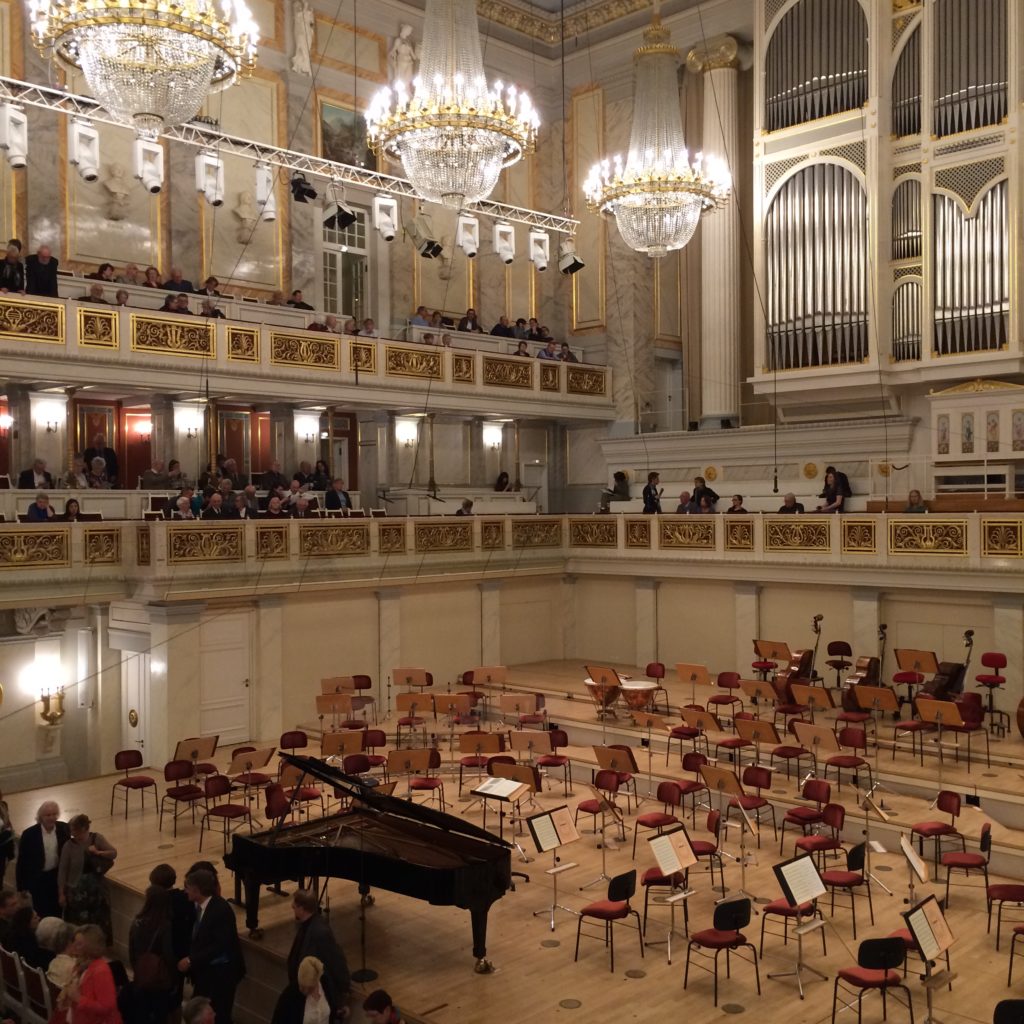
At Konzerthaus Berlin. Photo: mine. Please do not reproduce without permission.
Sighing looks back, anxiety looks forward, restlessness shuffles the dust of the present. Every bit of news highlights our keen desire for the familiar, even as it underlines our separation from it. As Pappano noted (again in The Stage) “we have to consider the emotional toll that (the lack of events) will take on people, the need for community.” How might that look? We won’t be able to experience the breaths, the sighs, the miniscule hums and in-beat head bobs, the audible humming and tapping feet and waving hands and fingers of insistent seat-conductors, nor the resonance of instruments and voices vibrating through thighs and hips and sternum, into temples, through ear lobes, rumbling nostrils and jaw and eyelashes; pressing one’s head or face against home speakers simply does not compare. Communal cultural experience within a confined space and time is not an everyday experience, and as such is one of the few things we desire actively and will pay for, perhaps because of this direct and sensual viscerality, however irritating and unpredictable some of its expression may be; it’s precisely that sense of the unpredictable which is so treasured. Writer Charles Eisenstein writes in a lengthy and thought-provoking essay:
Our response to it sets a course for the future. Public life, communal life, the life of shared physicality has been dwindling over several generations. Instead of shopping at stores, we get things delivered to our homes. Instead of packs of kids playing outside, we have play dates and digital adventures. Instead of the public square, we have the online forum. Do we want to continue to insulate ourselves still further from each other and the world?
[…]
To reduce the risk of another pandemic, shall we choose to live in a society without hugs, handshakes, and high-fives, forever more? Shall we choose to live in a society where we no longer gather en masse? Shall the concert, the sports competition, and the festival be a thing of the past? Shall children no longer play with other children? Shall all human contact be mediated by computers and masks? No more dance classes, no more karate classes, no more conferences, no more churches? Is death reduction to be the standard by which to measure progress? Does human advancement mean separation? Is this the future?
Advancement versus preservation; this seems like the crux of the issue with relation to issues within the classical world, and there are, right now, lessons which are being learned and applied, to varying degrees, and with varying degrees of success. New (and some might argue far overdue) paths are being forged in order to both advance the possibilities of music presentation while preserving the core of its unique and individual power. Perhaps, amidst the lessons corona might be able to teach us (as Eisenstein posits), a more active idea of community might not only be understood but literally and loudly lived. I want to believe this is the case as the Salzburg Festival moves forward in an altered state, through the planned (and also altered) presentations starting next month at Musikverein Wien, and the long-awaited reopenings in Italy, happening in mid-June. The Konzerthausorchester Berlin’s planned guest performance at Konzerthaus Dortmund is set to take place on June 7th, albeit in a modified form and with what Konzerthaus Berlin’s release terms “eines besonderen Wiedereröffnungskonzepts stattfinden” (“a special reopening concept”). The experience of community means connecting in many different ways and on many different levels with other sentient beings who carry their own unique experiences, ideas, expectations, and agendas, on as well as off the stage. How might one manifest (and indeed cultivate) the human kindness which is so often thrown away or taken for granted in so-called “normal” times within an ever-evolving paradigm of lived normalcy? Active kindness must surely factor into this paradigm somewhere (or one would wish it to), kindness holding hands with openness, patience embracing curiosity, gratitude on the same stair with discovery, and the cult of “genius” (and all its damaging effects) finally thrown out the window. Thus do the notions of advancement and preservation take on new meanings, as they should, within a new paradigm of The Normal. One can wish, but conscious action is required for manifestation, and it’s precisely conscious action which has now become part of our daily lives.

Members of the Bayerische Staatsoper Orchestra perform as part of the company’s inaugural Wednesday Stroll concert series, May 2020. Photo © Wilfried Hösl
That union of ideas, between advancement and preservation, of joining the human with the experimental, the sensual and the intellectual, feeling and doing, is being manifest in a number of ways as halls, galleries, museums, and other public spaces try to negotiate and define the new normal. Bayerische Staatsoper (BSO) began its “Wednesday Strolls” presentations this week, a chamber music series (running to 24 June) bringing a maximum of twenty spectators in various “unusual locations” in the National Theatre, with each concert lasting roughly 45 minutes and featuring musicians of the Bayerische Staatsorchester. Its first presentation was given backstage. The initiative, on top of the BSO’s pre-existing Monday concerts, are gestures which complement the incredible amount of video offerings currently extant at their website, and acutely underline the ever-expanding initiatives of the many organizations, including the Enescu Festival in Romania, who are offering broadcast concerts from their considerably impressive archive of past festivals. Organizations have, over the past three months or so, recognized that various non-conventional initiatives are vital in community-building in both literal and figurative senses. Members of the Rundfunk Sinfonieorchester Berlin (RSB), for example, have been performing short concerts outside hospitals and retirement residences over the past few months, thanks to the initiatives and coordinating efforts of Rudolf Döbler, longtime flautist with the orchestra, who has coordinated and organized RSB rehearsal visits and workshops for children since 2005. After one of these RSB charity concerts (held recently at a seniors residence in Pankow, an area in the northern part of the city), the orchestra’s Artistic Director and Chief Conductor (and General Music Director Designate of Bayerische Staatsoper) Vladimir Jurowski observed to Frankfurter Allgemeine that “Musik ist Menschlichkeit, und diese Menschlichkeit zählt am Ende mehr als alle Brillanz. Ich wünschte mir, wir behalten diese Erfahrung, wenn diese schwierigen Zeiten vorbei sind.“ (“Music is humanity, and in the end this humanity counts more than all brilliance. I hope we can keep this feeling when these difficult times are over.”)
Our experience of music is born anew within such experimental presentations and contexts. It’s been precisely the collective cultural saudade (for what else should we call it?) which has forced this rethink, one many argue is overdue. Community is, after all, quite possibly the only form of beauty left to us at the moment, and encouraging it in myriad forms seems like more than polite gesturing, but integral to creative, social, and spiritual health. Online conversations, voice calls, interactive viewing and listening parties, musical text exchanges, virtual classes and meetings, not to mention the rich, retro possibilities of live radio broadcast: such activities are all expressions of community, ones whose vibrant message, amidst the starkness of the technologies they employ, are worth warming hands and hearts to.
Various live events, including a recent panel hosted by Garsington Opera about the continuing impact of Beethoven (led by music writer Jessica Duchen and featuring tenor Toby Spence) allow for a sense of community to be fostered, however virtual, along with that deeply inhaled, ever-refreshing sense of exploration and discovery. It’s a combination that clearly recalls those long-ago art classes, but more than that, the spirit they encouraged. Reading over various comments and reactions on Facebook has been a lesson in patience, for the intransigent dismissal of the virtual, remains, for me, mysterious; it is the equivalent of painting one’s self into a corner and then complaining about the view. There is only one exit, and it involves bare feet and stains, the ruination of a perceived perfection. In an excerpt from his upcoming book On Nostalgia (Coach House Books), David Berry writes that “Nostalgia can only be lived in or abandoned: it is yearning distilled to its essence, yearning not really for its own sake but because there is nothing else to be done. Maybe it resisted definition for so long because naming it doesn’t help resolve anything anyway.” We are in a time where there is no resolution, only the stains of where we have been and the blank page of tomorrow, next week, next month, sketched as we walk, without erasers, into an unknown future, seeking community once more.

